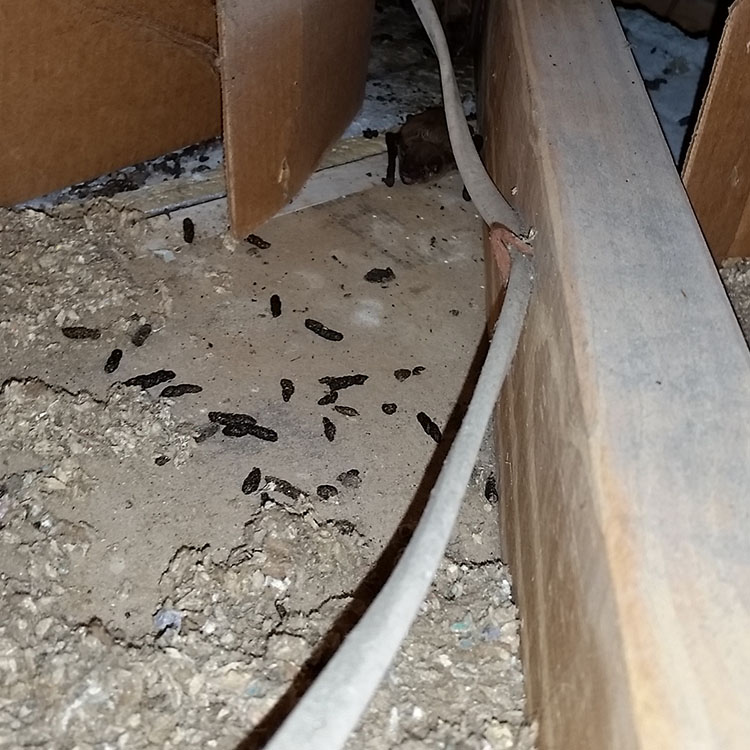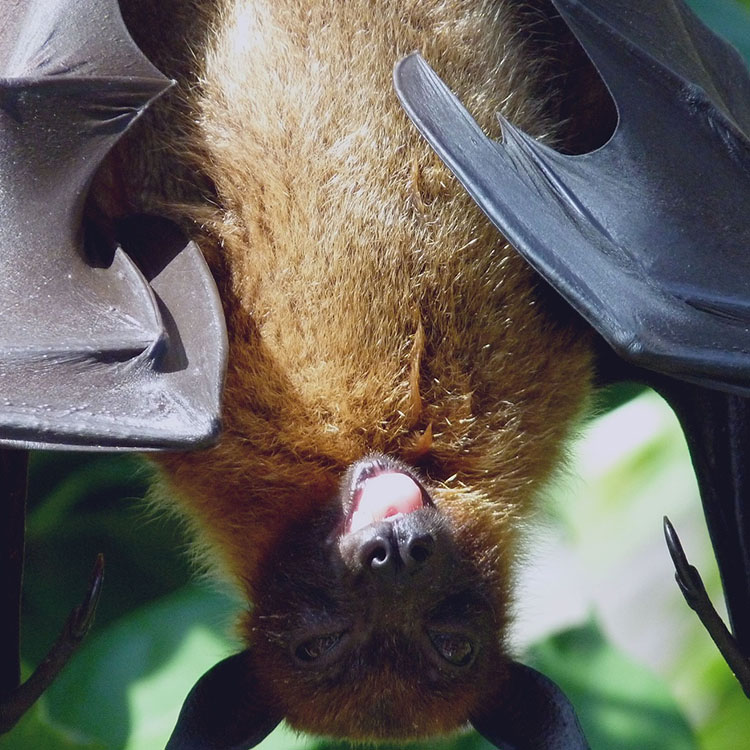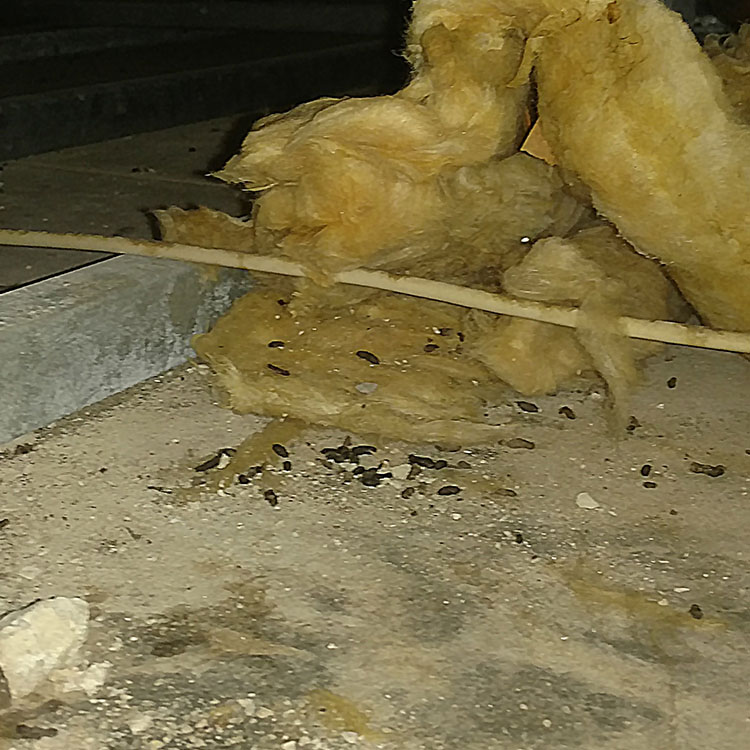Bat Diseases

Bats play a crucial part in our environment. However, they are also associated with diseases and bacteria that are extremely dangerous to individuals. Discover how you can remain safe when bats are near.
Should you be concerned about bats? Absolutely yes. You need to make sure you stay protected. What are the common concerns that we deal with regarding bats and the bacteria and diseases affiliated with bats in the attic? Number one is rabies. Rabies a disease caused by a virus and is almost always fatal. It spreads through a bite and infects the animal (or human). Additionally, rabies is also present in bat saliva. If you have an open wound and a rabid bat spits on you, it can pass the rabies virus on to you. In a study from the CDC, bats are the most frequently reported animal species with rabies in the US, specifically the Eastern and Southern Eastern parts of the country. If you think you've been exposed to bat rabies, this means that you've either been bit and scratched or spat on by a bat. You need to make sure you report this bat exposure to your local CDC office immediately. Bites and scratches should be assessed by your healthcare provider and reported to the Public Healthcare system.

Several extremely critical illnesses, diseases, bacteria and concerns are connected to bats.
Rabies is perhaps the most well known disease associated with bats. Along with critters such as dogs, foxes, raccoons, and skunks, bats are one of the primary critters that transfer rabies to humans.
An exposure to rabies normally develops when an individual is attacked by an infected critter. It can also be passed on when the spit from an infected critter comes in contact to an individual's mouth area, sight, nasal area, or an open wound or orifice.
When an individual comes across rabies, appropriate management of a vaccine known as post-exposure prophylaxis (PEP) can prevent the rabies disease from infecting. Once an individual becomes contaminated and signs start to occur, rabies vaccinations are almost always critical. Each year in the United States, up to 30,000 individuals receive PEP due to prospective exposures to infected critter, such as bats.
Histoplasmosis is another sickness associated with bats. Its signs differ greatly, but the issue mainly impacts the respiratory system. Sometimes, other body parts suffer. When this happens, it can be critical, and even fatal, if continued without treatment.
Histoplasmosis is due to an infection that develops in the ground or soil and has been contaminated with excrement from these critters, such as bats. Droppings, also known as bat guano, can pollute the ground and cause contagious spores to be spread when the ground is disrupted.
Even though it can be seen throughout the entire globe, it is extensive in certain places of the U.S. and can be seen in places that harbor large populations or colonies of bats, such as caverns.
While most contaminated individuals have no obvious ill effects, anti-fungal medicines are used to deal with many forms of the issue. If you have been in contact with Bat guano, or feel that you are showing signs of illness, you need to contact your local Doctor immediately.

Even though rabies and histoplasmosis can be seen all over the entire globe, some illnesses associated with bats tend to be discovered specifically in certain areas of the entire globe. Especially, research suggest that bats might cause several hemorrhagic fevers, which affect several body organ systems in the body and often cause to life-threatening illnesses.
One of these illnesses is Marburg hemorrhagic fever available specifically in African-American. Past breakouts have shown that Marburg Hemorrhagic Fever destroys up to 90% of those contaminated.
While the organic variety had for years been unidentified, new research suggest that clean fruit bats are an organic resource of herpes, and herpes has been spread over and over again from clean fruit bats in Uganda.
The same may be true for Ebola hemorrhagic high temperature. The bacteria that causes this sickness is often generally known as the "cousin" of Marburg stand, since they are the only unique organism that are supposed to be to a team of bacteria known as filoviruses. Like Marburg, Ebola is extremely critical and can be discovered mostly in African-American. Recent reports indicate that, as with Marburg, bats are likely to be an organic resource of herpes, although no Ebola has been spread from bats.
Two other bacteria - Nipah (which causes Nipah bacteria encephalitis) and Hendra (which causes Hendra bacteria disease) - are also associated with bats. Analysis shows that Hendra bacteria is associated with clean fruit bats (commonly called traveling foxes) in Sydney. Nipah and related bacteria are also associated with the same team of bats in South east Japan and parts of African-American, although breakouts of sickness in individuals have so far been limited to Malaysia, Singapore, Indian, and Bangladesh. Both bacteria can cause serious breathing and neurologic illness in individuals.

Another team of bacteria known as coronaviruses have been recognized in several types of bats. Coronavirus disease can sometimes cause difficult breathing sickness in individuals, but these bacteria were also suggested as a factor in the occurrence of Severe Serious Respiratory Problem (SARS) in South East Japan. While bats do not carry or transfer SARS, research have connected coronaviruses to bats in nations all over the entire globe.
Lyssaviruses have been discovered on every populated region. This team of bacteria causes rabies, in accessory for other illnesses that can be critical to individuals. While existing rabies vaccinations are effective against many of the bacteria in this team, several Lyssaviruses recognized in African-Americans and Japan mainly associated with bats cannot be avoided with existing rabies vaccinations.
Further research may highlight the part of bats as the resource of these bacteria and their ability to transfer illnesses due to these bacteria to individuals.
I strongly recommend giving me a call at 1-844-247-WILD. My name is Brendan Mangnitz and I'll be more than happy to go over any concerns of bacterial diseases or viruses that bat infestations can cause. If you need any more information you can always visit my How To Remove Bats guide for more bat facts.
